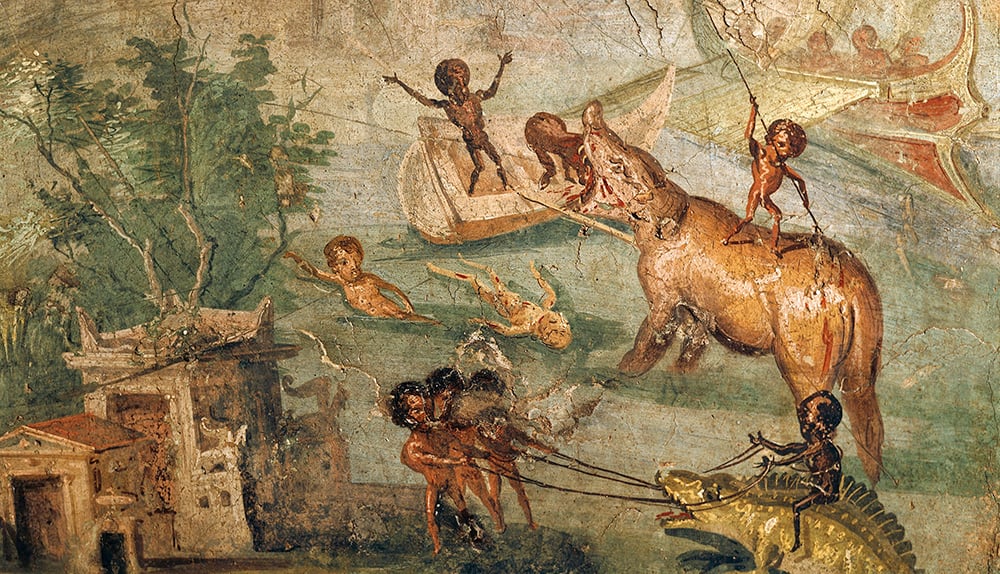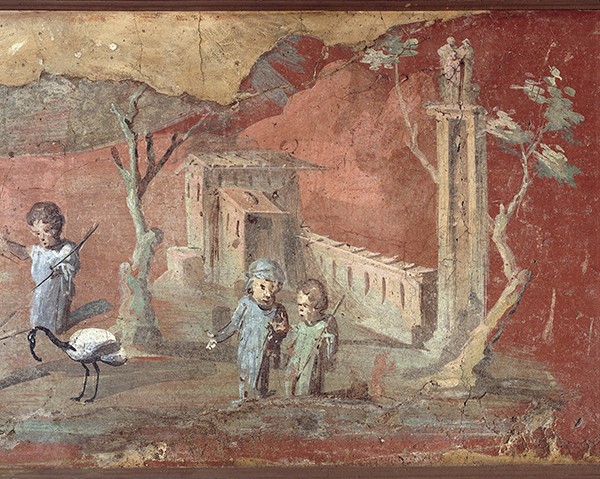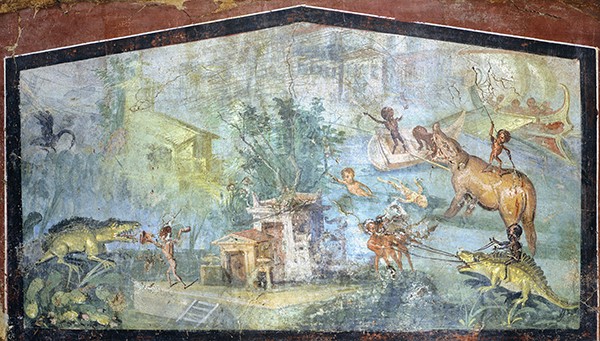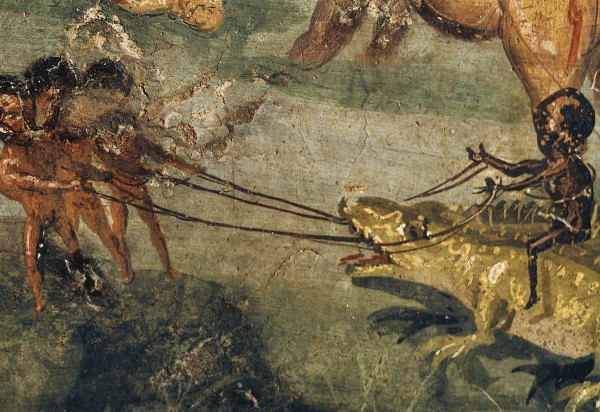
Studying the Art of the Roman Empire
With the launch of the new Bridgeman Education website, thousands of students in hundreds of institutions around the world will benefit from access to high quality images. I know, because I was one of them.
Like many students, I was not looking forward to my final year of university. Perpetually tired and beginning to worry for the future, I took a rather lax approach to module registration and, come the first week of term, found myself rejected from one oversubscribed module to another. I reluctantly signed on for the only available course: a Classics module on Roman art and architecture.
As a student of the contemporary arts and aesthetics, I was in a panic. The earliest art I had studied was perhaps one hundred years old – and here I was, faced with art over a thousand years old! But what seemed to be a terrible mistake later proved to be the most interesting, stimulating course I had ever taken thanks, in part, to the Bridgeman Images archive.
In studying the art of the Roman Empire, an entirely new world was opened up to me and, with it, an entirely new approach to research. Though the ancient tomes I began reading described the art of the age with compelling language, as a student of the visual arts I found myself struggling to appreciate the observable beauty of the works described.
Of particular interest to me was the ancient city of Pompeii. The great tragedy of Mount Vesuvius’ eruption has preserved Pompeii in a haunting yet illuminating sense, which offers fascinating insight into the pictorial representation of more civilian attitudes towards art.
Fresco portraying a Nilotic landscape with pygmies / House of Physician in Pompeii / De Agostini Picture Library / A. Dagli Orti / Bridgeman Images
Seeking Pygmies in Pompei
When researching Pompeian art further, I found myself drawn to brief, alluring mentions of a series of unique frescoes found in a domestic dwelling known as the House of the Physician. These ancient wall paintings were said to depict mythological figures called pygmies engaging in various activities in an exotic landscape thought to be the River Nile in Egypt.
The more I read about these mythological pygmy peoples, the more interested I became in the frescoes described in the House of the Physician. Whilst Roman art which depicts Egypt is in itself an interesting topic which emphasises political and geographical influences, exploring art which depicts pygmies – a fantastical race of dwarfish, dark skinned men – opened my eyes to the social attitudes towards disability and race in Rome.
I decided to change the contemporary focus of my undergraduate dissertation in order to explore my new found passion for Roman art. I couldn’t wait to get started, a feeling which had steadily become unfamiliar to me during my degree! One small issue remained: I did not know what the unique Pompeian frescoes which inspired me actually looked like.
Finding visual representations, let alone actual images, of these frescoes was proving impossible. Such was my enthusiasm for these intriguing domestic wall paintings, I began to look for flights to Italy to visit the Museo Archeologico Nazionale di Napoli in which they were now housed. But Bridgeman Images saved my dissertation – and saved me money on a trip to Naples!
A desperate search of the Bridgeman site led me to discover wonderful high resolution images of the very frescoes which had inspired the topic of my dissertation, showing both close up details and wider views of the entire wall panel. The paintings were even more charming than I had expected.
Discovered in the House of the Physician in Pompeii, the frescoes are believed to have been completed in the mid–first century A.D. The wall paintings found in the House depict the exploits of a group of pygmy peoples amongst a range of landscapes surrounding the River Nile. My favourite of the bunch shows a group of pygmy hunters attempting to dominate an enormous hippopotamus, with a few reckless pygmies trying to catch a ride on the back of a crocodile!
Detail of fresco portraying a Nilotic landscape with pygmies / House of Physician in Pompeii / De Agostini Picture Library / A. Dagli Orti / Bridgeman Images
In finding such detailed images of these frescoes, I was able to reinforce my arguments on the social and political depictions of disabled and racial minorities in Roman art. These were topics I had never even thought about before finding a wealth of ancient paintings and mosaics through Bridgeman Images. My journey through the Bridgeman archive opened my eyes to so many wonderful images that told fantastic stories, which eventually inspired me to form impassioned arguments for my a First–class dissertation.
I am very grateful to Bridgeman for illuminating rare and unfamiliar aspects of culture – and for saving me from an expensive trip to Naples. The introduction of Bridgeman Education is sure to be a valuable resource for institutions and their students throughout the world. I just wish I had been one of them sooner.

Ancient Roman fresco with rural scene, 1st Century / De Agostini Picture Library / Bridgeman Images
Find out More
Bridgeman Education offers a unique and flexible way to search content from the world’s major museums, art collections and historical sites, providing access to over 800,000 images – all copyright-cleared for educational use – through a single website.


